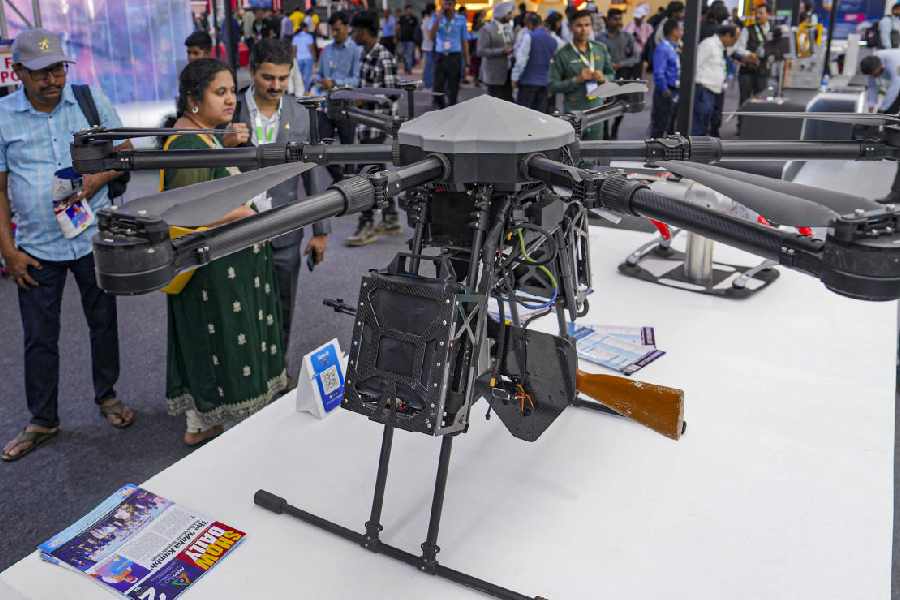Very good coordination among the central and Gujarat governments, the NDRF and all agencies concerned during Cyclone Biparjoy successfully saved precious lives, sources said on Saturday.
The weather system, which hit the landmass near Jakhau port as a very severe cyclonic storm on Thursday evening, turned into a deep depression and will further lose steam to become a depression, the India Meteorological Department said in its latest update.
Home Minister Amit Shah visited the cyclone-affected areas of Jakhau and Mandvi in Gujarat to take stock of the relief operation.
Sources privy to the development said there was very good coordination between the central and state governments, the National Disaster Response Force (NDRF) and all agencies concerned during the cyclonic storm that hit Gujarat.
Under the leadership of Prime Minister Narendra Modi and the able guidance of Home Minister Shah, the success achieved in dealing with such a huge storm showcases the story of strong and successful disaster resistance and management, they said.
They added that the determination of the Government of India to minimise the loss of life and property is clearly visible in these efforts.
From the formation of the International Coalition for Disaster Resilient Infrastructure to the steps taken to strengthen and expand the NDRF, the government's commitment, under the leadership of Prime Minister Modi, to ensure zero casualties during disasters is quite visible, they said.
They pointed out that the loss of life and property due to cyclones has come down by about 98 per cent in the last nine years because of the continuous efforts of the Union Ministry of Home Affairs.
The Centre adopted a holistic and integrated approach towards disaster management under the prime minister's leadership, they said.
Earlier, the approach of governments towards disasters was about post-disaster relief. Now, the approach is to ensure zero casualties through pre-disaster preparedness.
It is also indicative that the traditional deterministic approach towards disasters has been discarded and it was resolved that, while it may not be possible to avoid natural disasters, with determination and effort, minimal damage can be ensured, the sources said.
The glimpse of New India is clearly visible in this new temperament, they said.
The National Disaster Management Plan was launched by Prime Minister Modi.
Along with it, the roles and responsibilities of all the agencies and departments related to disaster management have been fixed in a matrix format through horizontal and vertical integration, the sources said.
The Centre has taken many important policy decisions in the direction of disaster management, the sources said. From 2014-15 to 2022-23, it released Rs 76,000 crore under the National Disaster Response Fund and Rs 1.07 lakh crore for States Disaster Relief Fund -- more than three times compared to the amount released between 2005-06 and 2013-14.
The National Disaster Mitigation Fund was set up in February 2021 by Home Minister Shah with an allocation of Rs 13,693 crore. Additionally, Rs 32,031 crore has been allocated under the State Disaster Mitigation Fund.
The NDRF has been deployed in 26 states under the policy of "pre-deployment" for "active availability".
During the Modi regime, the presence of NDRF teams and their transport arrangements has been streamlined and SDRFs were formed in all states.
The Home Ministry is now proactively sending Inter-Ministerial Committee teams immediately after natural calamities without waiting for memoranda from state governments. In the last four years, 73 Inter-Ministerial Committee teams have been sent to different states within 10 days of disasters.
A National Disaster Response Reserve has been created with a revolving fund of Rs 250 crore to keep the required inventory ready and provide immediate relief after a disaster.
The 'Aapda Mitra Yojana' has been implemented in 350 multi-hazard disaster-prone districts with an aim to train more than a lakh youth volunteers in disaster management.
The Centre will provide life insurance to all volunteers of the 'Aapda Mitra Yojana'. The scheme was approved with a total outlay of Rs 369.41 crore.
In March 2021, Home Minister Shah launched the Common Alerting Protocol with an outlay of Rs 354 crore to provide geo-location-based real-time alerts on natural disasters through mobile phones.
The National Disaster Management Information System portal was launched to develop a comprehensive online module for collecting sector-wise data on disaster losses and monitoring progress on various indicators under the four goals of the Sendai Framework for Disaster Risk Reduction.
Except for the headline, this story has not been edited by The Telegraph Online staff and has been published from a syndicated feed.










